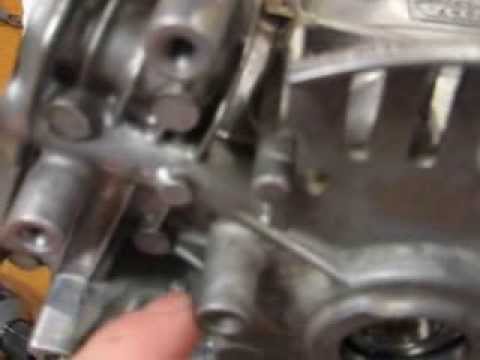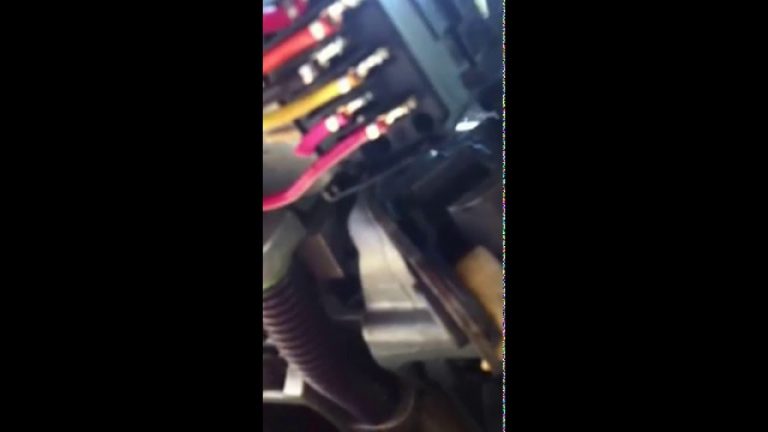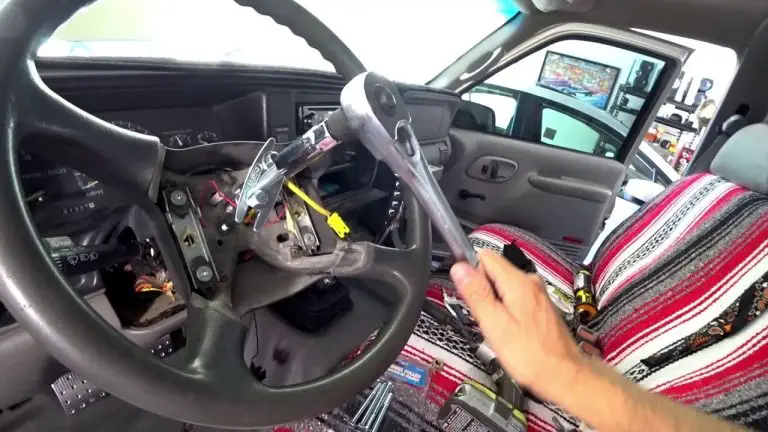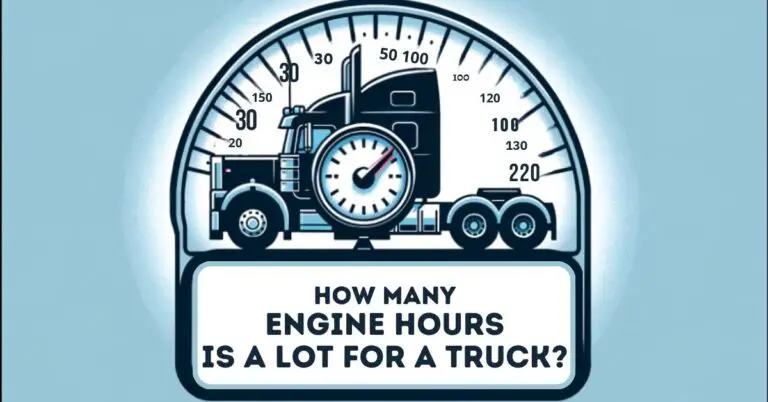Chevy 350 Coolant Flow Diagram
A Chevy 350 coolant flow diagram is an essential tool for understanding and maintaining the cooling system of your engine. The diagram shows how the coolant travels through the engine components, including the water pump, thermostat, radiator, coolant hoses, and heater core.
Proper coolant flow is crucial for regulating engine temperature and preventing overheating. By studying a coolant flow diagram, you can identify key components, trace the flow path, and diagnose potential issues, ensuring your Chevy 350 engine runs smoothly and efficiently.
Related Article: 6.7 Cummins Cooling System Diagram
Here is a basic description of the coolant flow:
- Coolant starts in the radiator, where it is cooled by air passing through the radiator’s fins.
- The cooled coolant flows through the lower radiator hose and enters the engine block’s water pump.
- The water pump circulates the coolant through the engine block, where it absorbs heat from the combustion process.
- As the coolant flows through the engine, it moves into the cylinder heads, where it cools the combustion chambers and the intake and exhaust valves.
- The heated coolant exits the engine through the intake manifold, which has coolant passages that connect the cylinder heads.
- The coolant then flows through the thermostat housing. If the engine is at operating temperature, the thermostat will open, allowing the coolant to flow back into the radiator via the upper radiator hose. If the engine is still cold, the thermostat remains closed, and the coolant recirculates within the engine until the engine reaches the proper operating temperature.
- In the radiator, the coolant releases its absorbed heat to the air passing through the radiator’s fins. This process cools the coolant before it repeats the cycle.
This description should give you a general understanding of the coolant flow in a Chevy 350 engine. Remember that this is a simplified explanation and that actual coolant flow may vary slightly depending on specific engine models and configurations.
How Car Cooling System Works
Which Way Does Coolant Flow Through an Engine
In general, the coolant flows through an engine in the following sequence:
- The coolant starts in the radiator, where it is cooled down by air passing through the radiator fins.
- The cooled coolant flows from the radiator to the engine through the lower radiator hose.
- The coolant enters the water pump, which is responsible for circulating the coolant through the engine.
- From the water pump, the coolant travels into the engine block, where it absorbs heat generated by the combustion process.
- The coolant then moves into the cylinder heads, cooling the combustion chambers and the intake and exhaust valves.
- The heated coolant exits the engine through the intake manifold or the head(s) and flows to the thermostat housing.
- If the engine is at operating temperature, the thermostat will open, allowing the coolant to flow back to the radiator via the upper radiator hose. If the engine is still cold, the thermostat remains closed, and the coolant recirculates within the engine until the proper operating temperature is reached.
- In the radiator, the coolant releases the absorbed heat to the air, cooling it down before starting the cycle again.
This is a general description of coolant flow through an engine, but the specifics can vary depending on the engine’s design and configuration.
Components of the Chevy 350 coolant system
Water pump
The water pump is a crucial component of the Chevy 350 coolant system. It is responsible for circulating the coolant throughout the engine, ensuring that it reaches all necessary parts to absorb and dissipate heat. The water pump is driven by the engine’s crankshaft, typically through a belt or gear system.
Regular inspection and maintenance of the water pump are essential, as a faulty pump can lead to poor coolant circulation, causing the engine to overheat.
Thermostat
The thermostat is another vital component in the coolant system. It is a temperature-sensitive valve that regulates the flow of coolant between the engine and the radiator. When the engine is cold, the thermostat remains closed, allowing the coolant to circulate only within the engine. This helps the engine reach its optimal operating temperature more quickly.
Once the engine reaches a predetermined temperature, the thermostat opens, allowing the coolant to flow through the radiator, where it dissipates heat before returning to the engine. A malfunctioning thermostat can result in engine overheating or inefficient cooling.
Radiator
The radiator is the primary heat exchanger in the Chevy 350 coolant system. It is responsible for releasing the excess heat absorbed by the coolant as it passes through the engine. The radiator consists of a series of tubes and fins that maximize the surface area for heat dissipation.
As the coolant flows through the radiator, the air is drawn across the fins, transferring heat from the coolant to the air. Ensuring that the radiator is clean and free of debris is crucial for maintaining its efficiency and preventing engine overheating.
Coolant hoses
Coolant hoses are responsible for transporting the coolant between various components of the cooling system. In the Chevy 350, there are two primary hoses: the upper radiator hose and the lower radiator hose. The upper hose connects the engine to the radiator’s top, while the lower hose connects the bottom of the radiator to the water pump.
These hoses should be inspected regularly for signs of wear, leaks, or damage, as compromised hoses can lead to insufficient coolant flow and engine overheating.
Heater core
The heater core is an additional heat exchanger in the coolant system that provides warmth to the vehicle’s interior. Coolant flows through the heater core, transferring heat to the air blown into the cabin by the blower motor.
While not directly involved in cooling the engine, the heater core is an integral part of the overall coolant system and should be maintained to ensure proper coolant flow and optimal cabin temperature.
Understanding coolant flow in the Chevy 350
The flow path through engine components
The Chevy 350 coolant system follows a specific flow path through the engine’s components. The coolant is drawn from the radiator’s bottom by the water pump and circulated through the engine’s water jackets to absorb heat. The heated coolant then flows to the thermostat, which regulates the flow of coolant between the engine and the radiator.
Once the coolant has been cooled by the radiator, it returns to the water pump to begin the process again. Understanding this flow path is crucial for diagnosing potential issues with the coolant system.
Role of the thermostat in regulating the flow
The thermostat is a crucial component in regulating the flow of coolant through the Chevy 350 engine. It remains closed when the engine is cold, allowing the coolant to circulate only within the engine to reach optimal operating temperature quickly. Once the engine has reached the correct temperature, the thermostat opens,
Allowing the coolant to flow through the radiator, where it is cooled before returning to the engine. A malfunctioning thermostat can result in engine overheating or inefficient cooling, making it essential to check it regularly.
How the water pump affects coolant circulation
The water pump plays a critical role in circulating coolant through the Chevy 350 engine. It is driven by the engine’s crankshaft and pumps the coolant through the engine’s components, ensuring that it reaches all necessary parts to absorb and dissipate heat.
A malfunctioning water pump can lead to poor coolant circulation, causing the engine to overheat. Regular inspection and maintenance of the water pump are essential to ensure optimal performance.
How to interpret a coolant flow diagram
Identifying key components
To interpret a coolant flow diagram, it is essential to identify the key components of the Chevy 350 coolant system. These include the water pump, thermostat, radiator, coolant hoses, and heater core. Understanding the function and location of each component will help you trace the flow path and diagnose any potential issues.
Tracing the flow path
A coolant flow diagram provides a visual representation of the flow path of the coolant through the engine’s components. To trace the flow path, start at the water pump and follow the arrows to identify the order in which the coolant flows through the engine.
Note any deviations or alternate paths in the diagram, as these can indicate potential issues with the system.
Recognizing potential issues
A coolant flow diagram can help you recognize potential issues with the Chevy 350 coolant system. For example, if the flow path indicates that the coolant is bypassing the radiator, it could be a sign of a malfunctioning thermostat. Similarly, if there are deviations in the flow path,
It could indicate a leak or blockage in the coolant hoses. By studying the coolant flow diagram, you can diagnose and address potential issues before they escalate into more significant problems.
Maintaining your Chevy 350 coolant system
Regular checks and maintenance tips
Regular checks and maintenance are essential for ensuring the optimal performance of your Chevy 350 coolant system. Some maintenance tips include:
- Checking the coolant level regularly and topping it off as necessary
- Inspecting the hoses for signs of wear, leaks, or damage
- Flushing the coolant system periodically to remove any buildup or debris
- Checking the thermostat for proper operation and replacing it if necessary
- Inspecting the radiator for damage or debris buildup
Troubleshooting common issues
Despite proper maintenance, issues may still arise with the Chevy 350 coolant system. Some common issues and their potential causes include:
- Engine overheating: This could be due to a malfunctioning water pump, thermostat, or radiator, or low coolant levels.
- Leaking coolant: Leaks could be caused by damaged or worn hoses, a faulty radiator, or a damaged water pump.
- Poor heat output: This could be due to a clogged heater core, low coolant levels, or a malfunctioning thermostat.
When to seek professional help
While regular maintenance and troubleshooting can help address many coolant system issues, some problems may require the assistance of a professional. If you notice any of the following, it is best to seek professional help:
- Steam or smoke coming from the engine
- Visible coolant leaks
- Low coolant levels despite regular top-offs
- Consistently high engine temperatures
In conclusion, understanding the Chevy 350 coolant system’s components and flow path is crucial for maintaining its optimal performance. Regular maintenance and troubleshooting can help you diagnose and address potential issues,
But seeking professional help is recommended in more severe cases. By following these tips, you can keep your Chevy 350 running smoothly and efficiently for years to come.

Credit: www.youtube.com
FAQs
What is the ideal coolant mixture for a Chevy 350 engine?
How often should I flush the coolant system in my Chevy 350?
Can I use any type of antifreeze in my Chevy 350 engine?
What are the signs of a malfunctioning water pump in a Chevy 350 engine?
How can I tell if the thermostat in my Chevy 350 engine is working properly?
Big Block Chevy Coolant flow
Conclusion
The Chevy 350 coolant system is a vital component of the engine’s overall performance and longevity. Understanding the components and flow path of the system can help you diagnose and address potential issues, ensuring that your engine operates smoothly and efficiently.
Regular checks and maintenance, such as inspecting the coolant level, flushing the system, and replacing faulty components, are essential for optimal performance. Troubleshooting common issues, such as engine overheating or coolant leaks, can also help you address potential problems early on.
By following these tips and seeking professional help when necessary, you can maintain the optimal performance of your Chevy 350 engine and avoid costly repairs down the road.
Read More:





